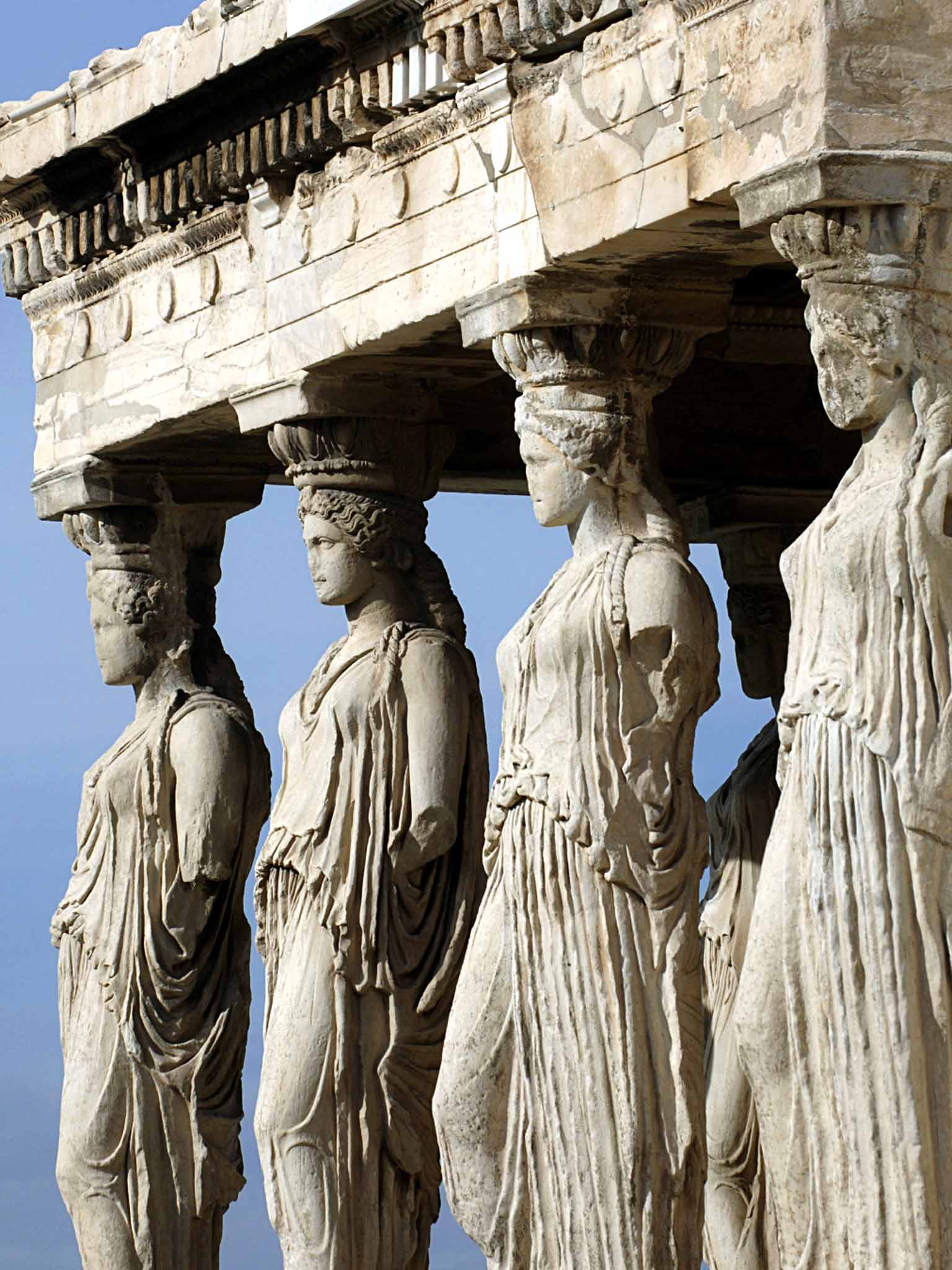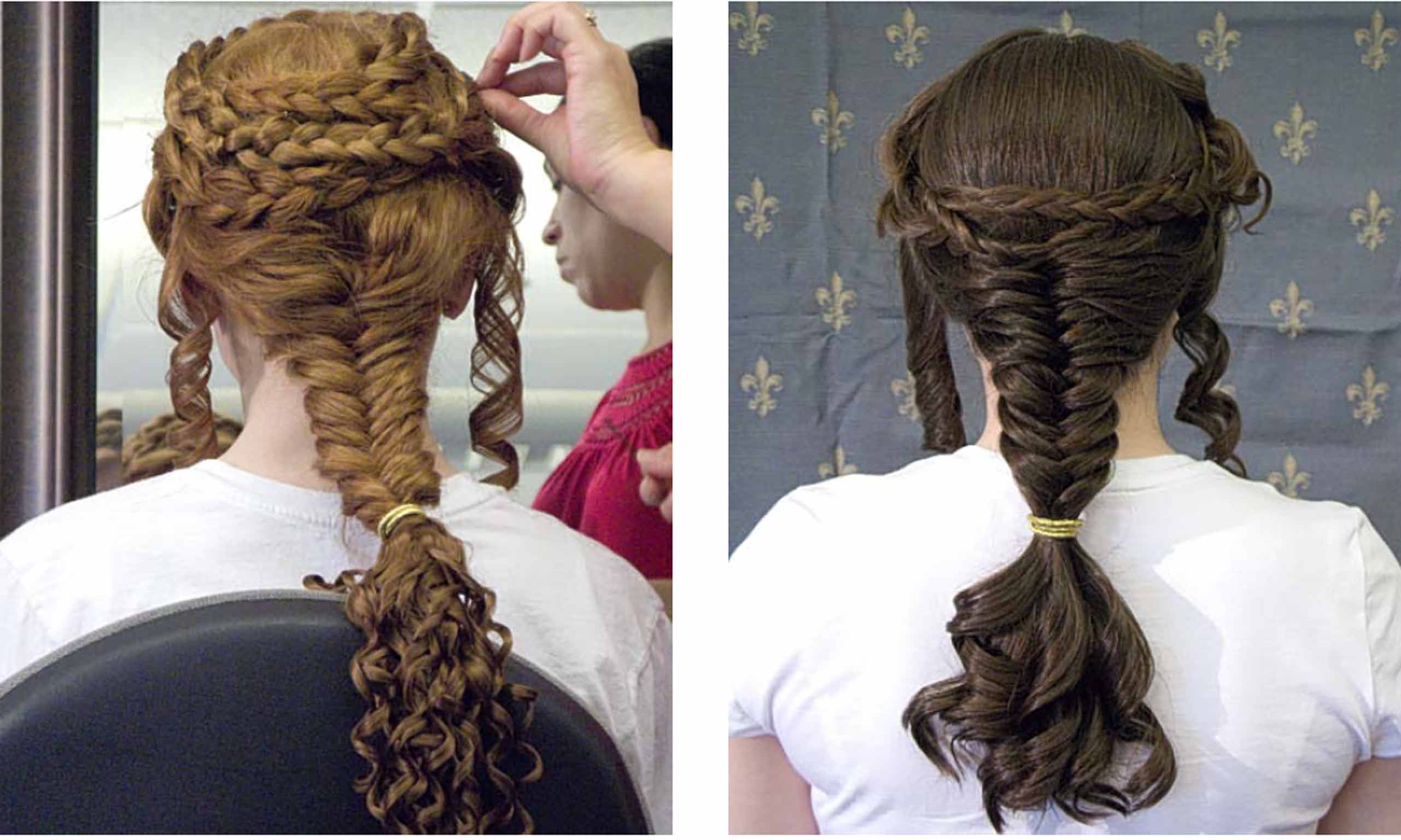The Rachel haircut of 2015? Hairdos of the Ancient Greeks brought to life
Art historian Katherine Schwab hit the hairdressers to copy the hairdos of the statues at the Acropolis. Celia Wren likes her style

Your support helps us to tell the story
From reproductive rights to climate change to Big Tech, The Independent is on the ground when the story is developing. Whether it's investigating the financials of Elon Musk's pro-Trump PAC or producing our latest documentary, 'The A Word', which shines a light on the American women fighting for reproductive rights, we know how important it is to parse out the facts from the messaging.
At such a critical moment in US history, we need reporters on the ground. Your donation allows us to keep sending journalists to speak to both sides of the story.
The Independent is trusted by Americans across the entire political spectrum. And unlike many other quality news outlets, we choose not to lock Americans out of our reporting and analysis with paywalls. We believe quality journalism should be available to everyone, paid for by those who can afford it.
Your support makes all the difference.Sometimes research into ancient history requires the use of a curling iron.
That's what Katherine Schwab discovered when she turned her attention to the hairstyles of the Caryatids, the six marble maidens created as columns on the south porch of the Erechtheion, part of the Acropolis of Athens. The ancient figures wear their tresses in intricate, subtly individualised arrangements of curls and wraparound plaits, each anchored by a thick fishtail braid dangling down the back.
An art history professor at Fairfield University in Connecticut, Schwab wondered whether flesh-and-blood women could wear their locks the same way. She found a hairstylist to reproduce the Caryatid coiffures and used some of her students as models.
Now she has turned her experiment into an exhibition, which is on show at the Greek Embassy in Washington DC. "The Caryatid Hairstyling Project" includes photos of the stone Caryatids, photos of the student models during and after the styling session, and a video of the undertaking.

An expert in Greek and Roman art and archeology, Schwab conceived of the project in 2007 when Fairfield hosted an art exhibition that included photos of the Caryatids. The six figures date to about 420 B.C. Over the years, they were damaged by war and pollution, and in the early 19th century, one of them was removed at the behest of Lord Elgin, the British ambassador to the Ottoman Empire, who appropriated many Greek antiquities. In 1979, the remaining five Caryatids were moved for their protection, and they are now prized attractions at the Acropolis Museum, while reproductions stand at the original site. (Lord Elgin's Caryatid is at the British Museum in London.)
Looking at the photos, Schwab realised that although she could analyse the semiotics of the Caryatids' clothing – their tunic-like robes and mantles indicate social status, for instance – their hair befuddled her. She got in touch with Milexy Torres, a local hairstylist who was intrigued by the idea of reverse-engineering the Caryatids' look.
When she studied the photographs, Torres realised that the figures' coiffures were all different, though based on a basic template. "Even though it's very simple, it looks very complicated," says Torres, who styles hair for ESPN.
She first tried an approximation of the Caryatid look on Schwab. The professor's hair wasn't thick or long enough for a real Erechtheion-style 'do, but still, when she wore Torres's handiwork to an exhibition opening, the effect was striking.
The students, Schwab recalls, "were so excited that I had done this with my hair". In her mind, she says, "a little lightbulb went off. Maybe this is that portal to make something that happened long ago much more exciting and real".
She then organised the styling session that features in the exhibition, with Torres working on the long, thick manes of six students. The entire process took about seven hours. The students who participated – and those who have subsequently seen the overview film – gained a new sense of connection to the ancient world, Schwab says.
In fact, the experiment was so successful that Schwab and her colleagues were inspired to organise "Hair in the Classical World," an exhibition planned for autumn at the Bellarmine Museum of Art.
One era grooms its tresses with olive oil and animal fat. For another, there's Redken and Paul Mitchell. But the underlying impulse remains the same.
Humans, Torres observes, "are still the same breed then and now. Hair is a big thing".
© Washington Post
Recreating history
Cosmetics
In 2003, archaeologists in south London working on the site of a new development unearthed a much older one – a Roman temple complex dedicated to the god Mars Camulus. Among the remains of a villa and bronze statuary, they found an ornate tin canister – a small pot that had been closed tight for more than 2,000 years. It revealed an off-white cream that still showed finger marks. Its use wasn't clear but almost complete preservation allowed scientists to analyse and recreate the paste, using starch and animal fats with tin oxide. They concluded that the resulting translucent cream had been an expensive face treatment, similar to today's cosmetics, with whitening qualities that suited the tan-averse fashion of the day. The original pot is now in the Museum of London.
The Kon-Tiki
Thor Heyerdahl set a high bar for the subsequent trend for historical recreations of machines for TV purposes (think trebuchets, Da Vinci's glider and Ray Mears with his dugout canoes). In 1947, the Norwegian adventurer and scientist built a raft of balsa wood and other materials and set sail from Peru to the islands of French Polynesia. He hoped that the Kon-Tiki expedition, named after the boat, would prove his still controversial theory that the island had been populated from the west not the east. The men took 101 days to make the 5,000-mile journey, encountering plenty of peril along the way. A 1950 film about the adventure won an Oscar for best documentary. Heyerdahl, who made many more voyages, died in 2002.
A taste of history
Perhaps unsurprisingly, there has been no shortage of historians who are dedicated to cooking up the past, in pursuit of the tastes and weaknesses of our forebears. But they don't always like what they find. As part of the recent 100-year anniversary of Captain Scott's doomed Antarctic expedition, there were attempts to recreate the dishes that sustained his men. Pemmican, a mixture of animal fat and protein that worked as the energy bar of its day, was easy to replicate, if not delicious, but penguin stew and turtle soup were very much off the modern menu. Elsewhere, Tudor diets have been of particular interest, with their 10-bird roasts and 5,000-calorie feasts – for breakfast.
Stonehenge
Some of our oldest structures pose the biggest mysteries. How did they build the Pyramids, or Stonehenge? Slave labour often helped but scientists remained undecided about the precise techniques used to build Stonehenge. In 1997, replica stones were made out of concrete and, using a combination of levers, ropes and greased wooden tracks, hundreds of arms were shown to be capable of shifting them, if slowly. But the more recent discovery of near perfect stone spheres, about the size of cricket balls, at similar sites in Britain, suggest that a ball-bearing technique might have been more efficient. As for lifting the stones, A-frames have been shown to work, while the lintels could have been inched upwards using wedges and a lot of strength.
Join our commenting forum
Join thought-provoking conversations, follow other Independent readers and see their replies
Comments